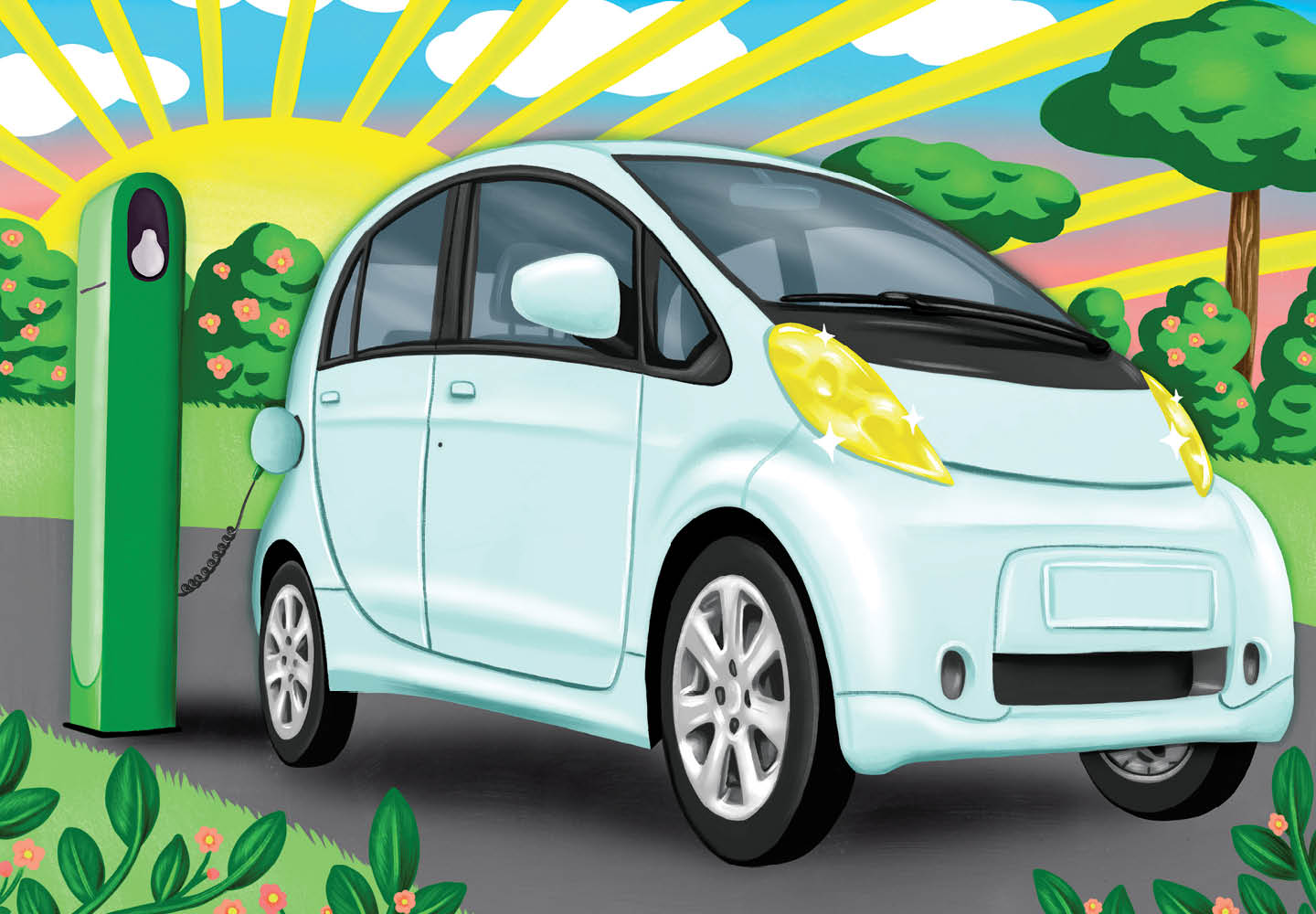Sjoerd van der Wal/Getty Images
The "Frunk"
Many EVs have storage in the front trunk. Why? They don’t need space for a big engine!
Picture this: You push a button. Your car pulls out of its parking spot. It comes to where you’re standing. You drop your backpack in the “frunk”—the front trunk—and hop in. Then you drive 250 miles or more without a drop of gas.
Does that sound like some crazy car from the future? It’s not! It’s the Tesla Model 3 electric vehicle. More than a million have already been sold.
Tesla is probably the most famous company that makes electric vehicles, or EVs. They use electricity instead of gasoline. You plug them in to power them up. These cars are quiet, comfortable, and very fast.
Many people believe EVs are the cars of the future. They might also be one of the best ways we can fight global warming and save our planet. But only about 1 out of every 100 vehicles on the road in the U.S. right now are electric. What will it take to get people to make the switch?
Picture this: You push a button. Your car drives to you. You put your backpack in the “frunk.” (That’s a front trunk.) Then you get in. You drive 250 miles or more. You use no gas.
Is this a car from the future? No! It’s the Tesla Model 3 electric vehicle. More than a million have been sold.
Tesla is a famous company. It makes electric vehicles, or EVs. They use electricity instead of gasoline. To power them up, you plug them in. These cars are quiet and comfortable. They are also very fast.
Many people think EVs are the cars of the future. They are also one of the best ways to fight global warming and save our planet. But only about 1 out of every 100 vehicles in the U.S. are electric. What will get more people to switch to electric?
Picture this: You push a button. Your car pulls out of its parking spot and comes to where you’re standing. You drop your backpack in the “frunk”—a front trunk—and hop in. Then you drive 250 miles or more without a drop of gas.
Does that sound like some crazy car from the future? It’s not! It’s the Tesla Model 3 electric vehicle—and more than a million have already been sold.
Tesla is probably the most famous company that makes electric vehicles, or EVs. These cars—which use electricity instead of gasoline—are quiet, comfortable, and very fast. To power them up, you just plug them in.
Many people believe EVs are the cars of the future. In addition, they are one of the best ways we can fight global warming and save our planet. But only about 1 out of every 100 vehicles on the road in the U.S. right now are electric. What will it take to get more people to make the switch?

